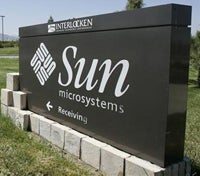 |
Sun’s facility in Broomfield, Colo., 2006. (Reuters photo) |
After several months of turmoil, things came to a head at Sun Microsystems with the unpleasant pre-holiday news that around 6,000 people, 15 to 18 percent of its workforce, would be cut in a restructuring plan that the firm hoped would save $700 million to $800 million annually.
The Santa Clara, California-based company declined to comment to InternetNews.com on the specifics of the cuts, such as where they will come and what divisions may be pared down or eliminated.
This has led to inevitable speculation of Sun (NASDAQ: JAVA) being bought, either whole or in pieces. Southeastern Asset Management, one of Sun’s largest shareholders, has been increasing its holdings and changed its ownership status to one more actively involved in the company’s affairs.
Sun’s primary problem has long been attributed to the fact it sells a proprietary RISC
Sun has offered both AMD Opteron and Intel Xeon-based servers for more than a few years, but the x86 business is only a fraction of its overall sales, and its growth is nowhere near enough to offset losses in SPARC sales.
But it’s not just rejection of UltraSPARC, Sun has failed to execute when it needed to, such as the slow move to build on international markets. Sun is heavily dependent on the U.S. market, and the U.S. economy is under severe strain this year. Josh Farina, an analyst with Technology Business Research, said Sun has faltered in its global execution.
“They launched some teams to focus on emerging markets this year, but they are late to it,” he told InternetNews.com. “HP and IBM have been in those markets for years and are well entrenched, and they’re not going to give that up.”
Cutting its way to success?
So can Sun cut its way to success? Yes, says Steven O’Grady, analyst with Redmonk, if it’s careful. “If the number were 30 or 40 or 50 percent, then certainly I think the question of being able to adequately carry its products forward would be legitimate, but 18 percent seems achievable to me.
It, as always, depends on where the cuts come from, and what the product impacts are,” he said.
Farina said if Sun makes it through 2009, it could be profitable by 2010 even with flat revenue. “I think the cuts are good for Sun, because Sun is shifting more toward being a software company. I think they need to pull back some of the R&D on the hardware side if their focus is going to be software going forward. But at the end of the day, Sun has to do better at execution and growing revenue. You can’t keep cutting operations,” he said.
CEO Jonathan Schwartz has undertaken a very aggressive software strategy since taking the reigns in 2006, culminating with the $1 billion purchase
of MySQL. But that at, and other moves reflecting Sun’s embrace of open source software, does not appear to be paying off as yet, nor is making its software available on other platforms than SPARC.
“The story with open source is they get access to a pool of prospective customers they couldn’t talk to before, but the benefits from open sourcing and optimizing their software to run on other vendors’ hardware isn’t materializing.,” said Farina.
And at least one analyst thinks splitting the company into its hardware and software halves wouldn’t be smart. “Speaking from a strategic perspective as opposed to a financial markets view, I’d argue against it,” said O’Grady. “Cloud computing is an architectural approach that naturally conflates those two businesses, and my belief is that Sun needs to be a significant player in that market, and therefore needs assets from both sides to be competitive.”
Both O’Grady and Farina argue Sun needs more time, a luxury it might have in a strong economy but not one available in the current climate.
Next Page: Any Takers?
Page 2 of 2
Any takers?
Fujitsu is an obvious choice, given its long hardware partnership with Sun. After that, the situation gets murky. IBM (NYSE: IBM) has nearly taken over the Java community from Sun with its Eclipse project, but IBM doesn’t need another RISC processor when it has the POWER chip.
Likewise, HP (NYSE: HPQ) might like a few parts of Sun but is getting rid of its own RISC processor, the PA-RISC, and migrating to Itanium. Dell
(NASDAQ: DELL) has no use for SPARC and does not like large acquisitions.
EMC (NYSE: EMC) could certainly use Sun’s storage business, MySQL and perhaps even some elements of the server and Solaris operating system, but does EMC want to own Java?
“Pick a major vendor: there would be assets of interest for each,” O’Grady said. But he suspects the sale would have to be as a whole, because “they won’t want to be strip mined.”
So is the sun setting on Sun? It seems so, and neither analyst was happy to acknowledge this about one of the Silicon Valley’s original names.
“As for whether it is a firm in decline, at present the finances certainly indicate that, but with good execution and time that trend can certainly be reversed,” said O’Grady.
“I see them as being on the decline,” Farina said. “With the uncertainty surrounding Sun’s future, if I’m a customer, I want to go with a company I know is going to be there for many years.”
“So my suspicion is customers will go with IBM or HP. They have a strong roadmap and customers know they will be around. It will be more of a challenge for Sun to win that business.”


